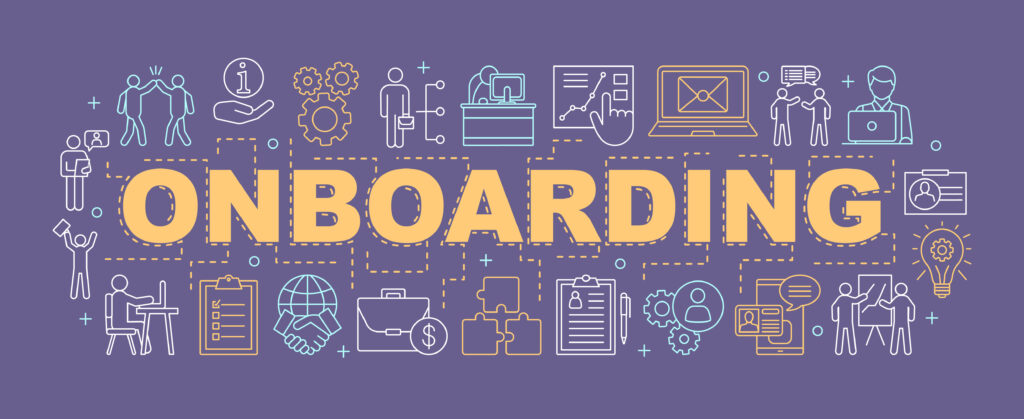3 Areas of Focus
Taking the right approach to training your new hires is one of the most important things any employer can do. The right education and guidance set your employees up for success in any role and ensure they can thrive in your industry.
What’s more, today’s employees crave training more than ever before.
According to some studies, around 40% of staff members worry their skills will become outdated in today’s quickly-evolving landscape. Moreover, 49% of employees want to enhance their skills but are unsure where to begin.
For business leaders, the focus areas for training an initial new hire should revolve around developing critical soft skills. Most of your new team members already have the technical talents required for their roles. However, you can always look into upskilling and expanding this knowledge later.
Your team members need help with the critical skills that will define their future with your business. Here are the three areas you need to focus on.
Skill 1: Goal Setting
Goals are critical in any role. According to research from Harvard Business School, people who successfully visualize and write down their professional goals are often 20% more successful. Goals act as a compass in any career, giving direction and guidance to your team members.
Start by providing your employees with clear insight into your business values and expectations for their work. This will help them monitor and measure their performance to ensure they’re delivering the right results. Next, arrange for a meeting during the onboarding process, where you can set different types of goals with your new team member, such as:
-
Short-term goals: Define what your new employee should be working towards during the first few months of their position in your company. Outline what you’d like to see from them as a manager, and ask what they would like to accomplish during this time.
-
Long-term goals: Ask about where your employee sees themselves in the future. Do they want to work towards a promotion or a higher-paying role? Together, you can outline a plan for how they can make their targets a reality.
-
Development goals: Where would your employees like to improve their skills or become more proficient during their time with your company? What training opportunities would they want access to, and where do they feel they need the most help?
It’s also worth providing your employees with key tips on improving their chances of successfully reaching their goals. Discuss the difference between setting realistic and unrealistic targets, and look at how you can help your employee to become more focused.
One option could be to set your new team member up with a mentor, so they can constantly get feedback on their progress. It’s also worth having regular meetings with each employee throughout the year to see whether they’re accomplishing their goals and what you can do to assist them.
Skill 2: Relationship Building
Relationships form the foundation of strong company culture. Research shows positive relations between employees and their managers and colleagues lead to better job satisfaction, increased retention, and boosted productivity. However, many employees struggle with creating the right connections throughout the company.
During the initial onboarding process, when you’re bringing your new team member into your company, introduce them to the people they will be working with. Some bonding activities can be extremely useful during this stage to help with breaking the ice.
Next, provide tips on strengthening your team members’ relationships with colleagues and managers. For instance, you can encourage them to:
-
Be proactive in offering help: Employees who constantly look for ways to support and assist their other team members are more likely to be appreciated by the rest of the team. Encourage your staff to be proactive team players.
-
Take part in meetings: While not all of your business meetings may be mandatory, many provide networking and communication opportunities. Asking staff members to participate in regular video and in-person meetings will help to strengthen bonds.
-
Develop emotional intelligence: Training your employees on how to demonstrate good emotional intelligence is fantastic for enhancing their relationship-building abilities. They should be aware of how to recognize and understand the emotions of others.
-
Communicate constantly: Make sure your team has a strong culture of constant communication and collaboration. Everyone should feel included in business conversations, and every team member should feel as though they have a voice.
-
Network whenever possible: Allow team members to attend events and networking opportunities. This is a good way to help them expand their relationships and feel more confident communicating with others.
It’s also helpful to have diversity, equity, and inclusion policies, which highlight how each team member should show respect for their fellow workers. If any of your employees seem to be isolating themselves from the group or show a negative attitude towards others, jump in and see what you can do to fix the problem.
Skill 3: Productivity
All employers want productive, efficient, and engaged team members. While the support you give your employees in the form of the right technical skill training and tools will help to enhance productivity, there are also steps employees will need to take themselves.
Ask your employees how they currently pursue productivity in their workflows and where they’re most likely to struggle. If your team members are working in a remote or hybrid environment, they may need more assistance with scheduling their work and ensuring they adhere to deadlines.
Introduce your employees to different methods of boosting productivity, such as:
-
Arranging their to-do list: Some employees will find it easier to tackle the toughest jobs first thing in the day. Others will prefer to start with easier tasks and work on complex challenges later. Encourage your staff members to discover what works for them.
-
Taking regular breaks: While pushing your employees to be productive at all hours of the day is tempting, we all need breaks. Help your employees to take time out when they need it, by allowing them to step away from their schedule from time to time.
-
Tackling one task at a time: Teach your employees that multi-tasking is rarely the best way to generate the right results when it comes to productivity. Breaking large tasks into smaller pieces and working on targets one at a time is more likely to generate results.
-
Managing energy (not just time): Give your employees the freedom to adjust their work schedule according to when they have the best sense of focus. In today’s hybrid and remote work world, giving your employees more autonomy can boost productivity.
-
Leveraging useful tools: Certain tools and technology in the workplace can assist with productivity. For instance, some team members might use time-tracking applications to discover how long they spend on different tasks. Others might organize their day with a centralized project management system.
If any of your employees are struggling with productivity, it’s important to reach out and find out what’s happening. The problem could be with their schedule and how they organize their day. Alternatively, you could find your employees are experiencing the early stages of burnout. Either way, you can work together to develop a plan to promote the best workflow.
Here at The Black Diamond Agency, we have been helping corporate retailers with their talent acquisition and helping specialty retail talent find their ideal roles for 7+ years. If you want to find out how we can help, email us at Info@TheBlackDiamondAgency.com. We look forward to working with you!










